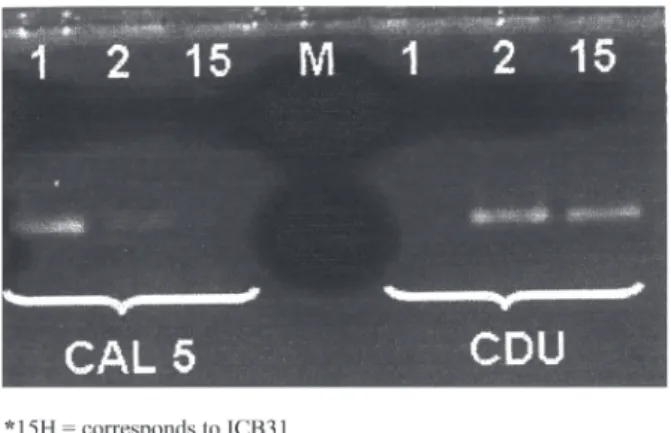MOLECULAR IDENTIFICATION OF Candida dubliniensis ISOLATED FROM ORAL LESIONS OF HIV-POSITIVE AND HIV-NEGATIVE PATIENTS IN SÃO PAULO, BRAZIL
Texto
Imagem

Documentos relacionados
PREVALENCE OF HEPATITIS B AND C IN THE SERA OF PATIENTS WITH HIV INFECTION IN SÃO PAULO, BRAZIL.. Maria
Of the 40 patients with positive yeast cultures (33 patients without oral candidiasis and seven patients with oropharyngeal candidiasis), 23 (58%) presented oral colonization
The aim of this study was to assess a collection of yeasts to verify the presence of Candida dubliniensis among strains isolated from the oral mucosa of AIDS pediatric patients
- Detection of Candida dubliniensis in oropharyngeal samples from human immunodeficiency virus infected and non-infected patients and in a yeast culture collection. - Asymptomatic
The aim of the present study was to evaluate the frequency of KSHV infection in KS lesions from HIV-positive and HIV-negative patients in Brazil, as well as to review the
We assessed occult HBV infection prevalence in two groups of immunocompromised patients (maintenance hemodialysis patients and HIV-positive patients) presenting HBsAg- negative
The present study assessed the prevalence of subtype C of HIV-1 in the city of Rio Grande, RS, Brazil, through the epidemiological and molecular analysis of HIV-1-positive
Although Candida albicans is the most frequently-isolated species related to oral opportunistic infections, an increase in the frequency of oral infections caused by non- albicans